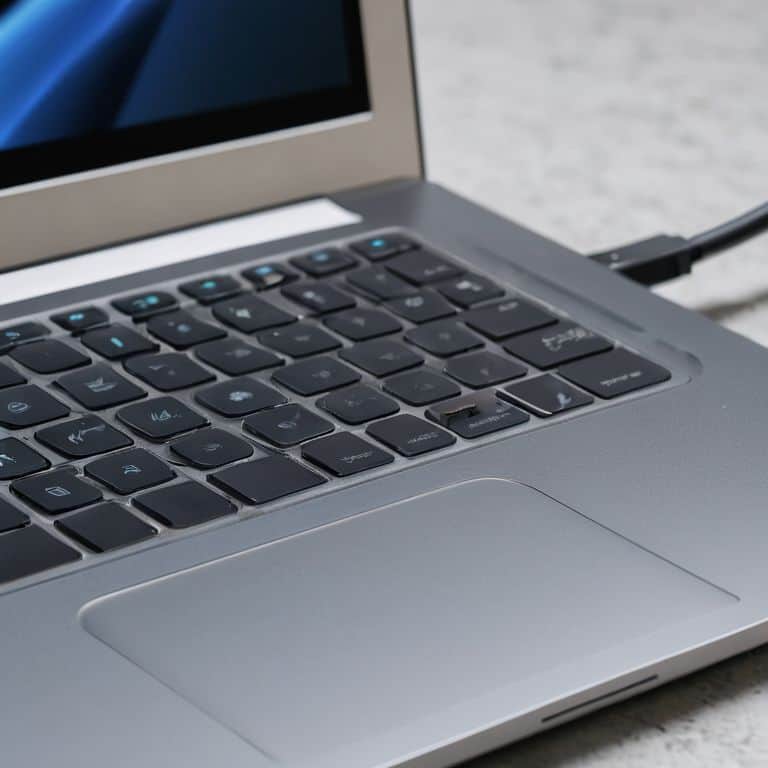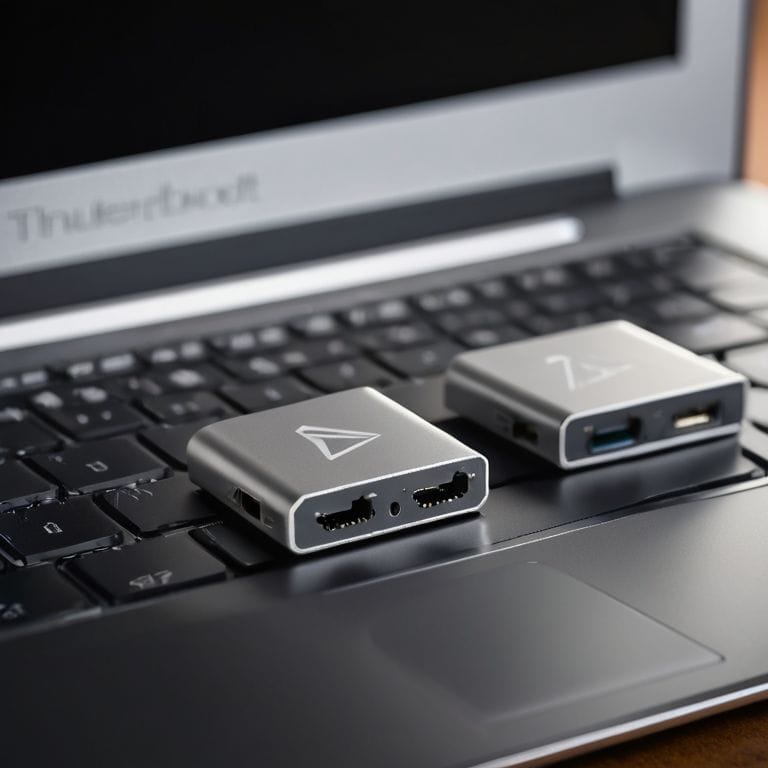As I sat at my workbench, surrounded by wires and circuit boards, I couldn’t help but think about the age-old debate: thunderbolt vs usb-c. It’s a choice that has plagued consumers and tech enthusiasts alike for years. I’ve seen friends and family members struggle to decide which port to use, and it’s amazing how much confusion still surrounds these two technologies. I’ve spent years designing chips for smartphones and laptops, and I’ve worked with both Thunderbolt and USB-C. So, when it comes to making a decision, what’s the real difference between these two ports?
In this article, I want to cut through the hype and give you a no-nonsense look at thunderbolt vs usb-c. I’ll share my personal experience and insights, gained from years of working in the industry, to help you make an informed decision. My goal is to demystify these technologies and provide you with a clear understanding of their strengths and weaknesses. By the end of this article, you’ll know exactly which port to use and when, and you’ll be able to make informed decisions about your tech purchases. I’m excited to share my knowledge with you, and I’m confident that you’ll come away with a newfound understanding of these complex technologies.
Table of Contents
Thunderbolt

Thunderbolt is a high-speed interface that uses the same _reversible_ connector as USB-C to deliver speeds of up to 40 Gbps, making it a top choice for professionals who need to transfer large files quickly. At its core, Thunderbolt relies on a dual-channel architecture, allowing it to achieve such high speeds while maintaining low latency. Its main selling point is the ability to support multiple 4K displays, making it perfect for graphic designers and video editors.
As someone who’s worked with Thunderbolt technology, I can attest that its speed and reliability make a huge difference in real-world applications. For instance, when I’m working on a project that involves transferring large video files, _fast data transfer rates_ are crucial to meeting deadlines. I recall a project where I had to transfer a large video file, and using Thunderbolt saved me hours of time, allowing me to focus on editing instead of waiting for the file to transfer. This kind of practical performance is what makes Thunderbolt so valuable in professional settings.
USB-C

USB-C, also known as USB Type-C, is a versatile connector that can be used for both data transfer and power delivery, with speeds of up to 10 Gbps, making it a great option for those who need a single port for multiple functions. The core mechanism of USB-C lies in its reversible design, which eliminates the frustration of trying to insert the connector correctly. Its main selling point is the ability to _simplify_ the number of ports on a device, making it ideal for thin and light laptops.
As a tech enthusiast, I believe that USB-C has the potential to _revolutionize_ the way we interact with our devices. For example, when I’m on the go, I love that I can use a single USB-C port to charge my laptop, transfer files, and even connect to a larger display. This kind of convenience is what makes USB-C so appealing to consumers. By understanding how USB-C works, we can unlock its full potential and make the most of its capabilities.
Thunderbolt vs USB-C: Head-to-Head Comparison
| Feature | Thunderbolt | USB-C |
|---|---|---|
| Price | Generally more expensive | Less expensive |
| Key Feature | High-speed data transfer and display output | Data transfer and power delivery |
| Best For | Professional users needing high-speed data transfer and display support | General users needing standard data transfer and power delivery |
| Speed | Up to 40 Gbps | Up to 10 Gbps |
| Power Delivery | Up to 100W | Up to 100W |
| Compatibility | Specific Thunderbolt devices and computers | Wide range of USB-C devices and computers |
| Cable Length | Up to 2 meters with active cables | Up to 2 meters |
Thunderbolt vs Usb C

Understanding the differences between Thunderbolt and USB-C is crucial because it directly affects the _performance_ of your device. When it comes to data transfer and charging, the type of port you use can make a significant difference in your overall user experience.
In a head-to-head analysis, Thunderbolt offers faster data transfer speeds, making it ideal for applications that require high-bandwidth. On the other hand, USB-C is more _versatile_, allowing for both data transfer and charging, as well as supporting multiple protocols. This means that while Thunderbolt may be faster, USB-C provides more _convenience_ and flexibility.
When it comes to the criterion of Thunderbolt vs USB-C, I would declare USB-C the winner in terms of practical implications. Its ability to support multiple protocols and provide both data transfer and charging capabilities make it a more _practical_ choice for everyday use. While Thunderbolt may offer faster speeds, the benefits of USB-C’s versatility outweigh its slightly slower speeds, making it the more desirable option for most users.
Key Takeaways: Thunderbolt vs USB-C
Thunderbolt and USB-C are not interchangeable terms, despite both being used for data transfer and charging, with Thunderbolt offering faster speeds and more versatility in terms of daisy-chaining devices
The choice between Thunderbolt and USB-C depends on your specific needs, such as whether you need to transfer large files quickly, charge your laptop, or connect multiple devices to your computer
When deciding which port to use, consider the devices you own and their capabilities, as well as any future-proofing you might need, keeping in mind that Thunderbolt is generally more expensive but offers more advanced features
The Port Puzzle
Understanding the difference between Thunderbolt and USB-C is like being a master plumber – you need to know which pipes carry what kind of data, and how fast they can flow, to avoid clogging up your entire system!
Chloe Brennan
The Final Verdict: Which Should You Choose?
As we’ve explored the differences between Thunderbolt and USB-C, it’s clear that both have their strengths and weaknesses. Thunderbolt offers faster speeds and more versatility in terms of daisy-chaining devices, making it a great option for those who need to transfer large files or use multiple peripherals. On the other hand, USB-C is more widely adopted and provides a more straightforward, plug-and-play experience. When considering which to use, it ultimately comes down to your specific needs and workflow.
So, who wins in the end? For power users who require high-speed data transfer and the ability to connect multiple devices, Thunderbolt is the clear winner. However, for the average user who just needs to charge their device or transfer a few files, USB-C is more than sufficient. Casual users will likely not notice a significant difference between the two, and USB-C’s widespread adoption makes it a more convenient choice. Ultimately, the decision between Thunderbolt and USB-C comes down to your individual needs and habits.
Frequently Asked Questions
What are the key differences in data transfer speeds between Thunderbolt and USB-C?
Think of data transfer speeds like water flowing through pipes. Thunderbolt 3 is like a wide hose, capable of transferring up to 40 Gbps, while USB-C is more like a narrower pipe, with speeds up to 10 Gbps. This means Thunderbolt can move more data, faster – ideal for heavy tasks like video editing or large file transfers.
Can I use a USB-C cable with a Thunderbolt device, and vice versa?
Think of it like plumbing – just because two pipes fit together, doesn’t mean they’ll work as expected. You can use a USB-C cable with a Thunderbolt device, but it’ll only work at USB speeds. However, using a Thunderbolt cable with a USB-C device will work, but you won’t get Thunderbolt speeds unless the device supports it.
How do Thunderbolt and USB-C compare in terms of power delivery and charging capabilities?
Think of power delivery like water flowing through pipes. Thunderbolt 3 can deliver up to 100 watts, while USB-C can deliver up to 100 watts as well, but it depends on the device and cable. It’s like having a pipe that can handle a certain amount of water pressure – if it’s not designed for high pressure, it won’t deliver as much water, or in this case, power.









